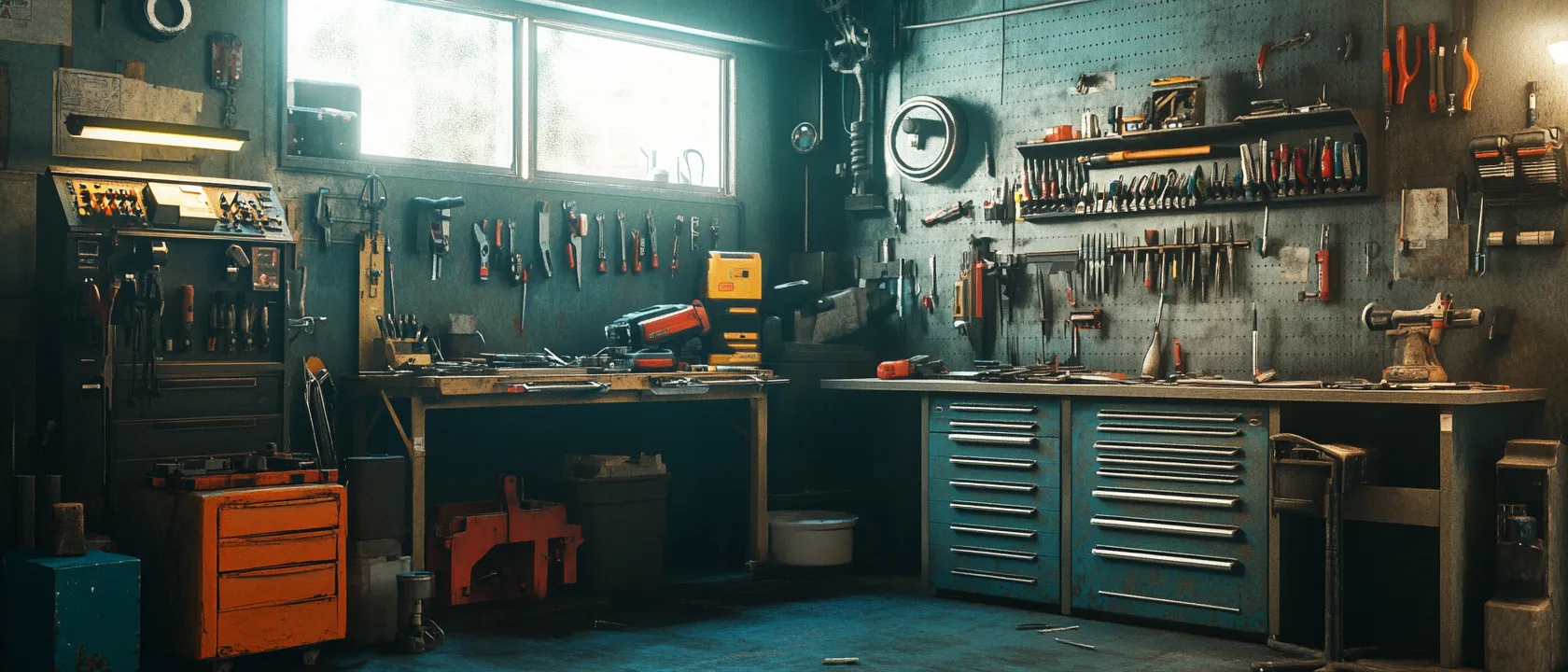In an era where “sustainability” has become an overused marketing buzzword, the furniture industry presents a particularly complex landscape of environmental claims, greenwashing, and occasional genuine innovation. As conscious consumers increasingly seek to align their purchasing decisions with ecological values, they face the challenging task of distinguishing between superficial eco-friendly messaging and companies making authentic, comprehensive commitments to environmental stewardship. This critical distinction raises an essential question: what actually constitutes a truly sustainable furniture brand in today’s context?
This in-depth exploration examines the multidimensional nature of genuine sustainability in furniture production, moving beyond simplistic material-focused definitions to evaluate the holistic practices that characterize authentic environmental leadership. From sourcing and manufacturing to distribution models and end-of-life considerations, we’ll establish a comprehensive framework for identifying companies that are genuinely pioneering a more sustainable future for furniture rather than merely capitalizing on eco-conscious consumer trends.
Beyond Materials: The Comprehensive Sustainability Matrix
True sustainability in furniture production extends far beyond simply using reclaimed wood or recycled materials, encompassing a complex web of interconnected practices and commitments.
Holistic Material Sourcing: Beyond the Obvious Choices
The journey toward sustainability begins with raw materials, but this dimension involves nuanced considerations beyond simplistic “natural versus synthetic” dichotomies:
Responsible Wood Sourcing represents the most visible aspect of sustainable furniture materials, but implementation varies dramatically:
- Forest Stewardship Council (FSC) certification provides third-party verification of responsible forest management, though even this gold standard ranges from 100% certified content to mixed sources.
- Closed-loop forestry systems where brands maintain direct relationships with specific managed forests, ensuring regeneration rates exceed harvesting and maintaining ecosystem health.
- Urban wood rescue programs that intercept trees removed from urban environments due to disease, damage, or development—material that would otherwise enter waste streams.
- Verification systems that trace individual pieces back to specific harvest locations, a practice pioneered by companies like Emeco who document the journey of each wooden component.
Innovative Material Development often creates more sustainable options than traditional “natural” materials:
- Engineered wood products using fast-growing species and agricultural waste can outperform virgin hardwoods in environmental impact when properly manufactured.
- Bio-composites combining agricultural waste with natural binding agents create durable structural materials with significantly lower environmental footprints than conventional alternatives.
- Mycelium-based materials grown from fungal networks and agricultural byproducts create biodegradable structural components with minimal energy inputs.
- Ocean plastic reclamation programs transforming marine plastic pollution into durable furniture components, simultaneously addressing waste and creating long-lasting products.
Truly sustainable brands demonstrate sophisticated understanding of these material complexities rather than relying on simplistic “natural materials” messaging that can sometimes mask less obvious environmental impacts.

Manufacturing Revolution: Process as Important as Product
The environmental impact of how furniture is made frequently exceeds the impact of what it’s made from:
Energy Management represents a critical but often overlooked sustainability dimension:
- Carbon-neutral manufacturing through combinations of efficiency improvements, renewable energy generation, and verified offset programs.
- On-site renewable energy with properly sized systems producing significant portions of operational requirements rather than token installations.
- Strategic facility locations near material sources and transportation hubs to minimize embodied energy in logistics.
- Manufacturing process optimization to reduce energy requirements through equipment modernization and workflow efficiency.
Water Systems in furniture production present both quality and quantity challenges:
- Closed-loop water circulation systems that capture, filter, and reuse process water rather than continually consuming fresh resources.
- Chemical elimination in finishing processes, moving away from conventional stains and sealants toward natural oils, waxes, and water-based alternatives.
- Wastewater treatment exceeding regulatory requirements, ensuring water returning to local systems is cleaner than when extracted.
- Drought-resilient facility design incorporating rainwater harvesting, landscape management, and process efficiency to minimize dependence on municipal water systems.
Waste Elimination moves beyond basic recycling to fundamentally rethink production systems:
- Zero-waste manufacturing certification through programs like TRUE (Total Resource Use and Efficiency) that verify diversion of over 90% of waste from landfills.
- By-product innovation where waste streams from primary production become inputs for secondary product lines.
- Cutting optimization software that minimizes material waste through sophisticated nesting algorithms and creative component design.
- Component standardization allowing interchangeability and repair rather than replacement of entire pieces when damage occurs.
Human Ecology: The Social Dimension of Sustainability
Environmental sustainability cannot be separated from social sustainability, as the two dimensions are inextricably connected:
Labor Practices directly impact both social and environmental outcomes:
- Living wage commitments throughout supply chains, recognizing that economic security enables environmental stewardship at individual and community levels.
- Artisan partnerships that preserve traditional woodworking and craft techniques, maintaining cultural knowledge that typically embodies generations of sustainable material understanding.
- Worker ownership structures that distribute decision-making and benefits, creating systemic incentives for long-term thinking rather than short-term extraction.
- Skill development programs that build capacity in local communities, enabling manufacturing to remain or return to consumer markets rather than chasing lowest-cost labor.
Community Integration anchors sustainable brands in place-based responsibility:
- Local material sourcing that reduces transportation impacts while creating economic incentives for regional environmental stewardship.
- Educational programs opening facilities for public learning about sustainable practices and materials.
- Collaborative design processes incorporating community input into product development and production planning.
- Regional ecosystem investment supporting environmental restoration and conservation in operating areas, recognizing the connection between business health and ecological health.
These social dimensions of sustainability remain underrepresented in most consumer-facing communications but represent essential components of truly sustainable furniture production.
The Business Model Matters: Sustainability Beyond Production
Even the most sustainable manufacturing processes cannot overcome fundamentally unsustainable business models built on planned obsolescence and continuous consumption.
Longevity by Design: The Most Sustainable Furniture Lasts Generations
The single most important sustainability factor may be product lifespan, as extending useful life by even a few years dramatically reduces environmental impact:
Design for Durability incorporates several critical elements:
- Structural engineering that accounts for decades of use rather than merely meeting minimum standards.
- Appropriate material selection based on specific component requirements rather than uniform material use throughout.
- Joinery techniques that allow movement, repair, and even disassembly rather than permanent connections that fail under stress.
- Testing protocols that simulate extended use conditions rather than merely meeting industry certification minimums.
Aesthetic Longevity proves equally important for extending useful life:
- Trend-resistant design languages that emphasize timeless forms rather than following fast-furniture fashion cycles.
- Material aging consideration selecting materials that develop character rather than merely degrade with use and time.
- Adaptable configurations that can evolve with changing spaces and needs rather than becoming obsolete when circumstances change.
- Emotional durability creating pieces that users develop attachment to rather than viewing as temporarily satisfying functional requirements.
Repair Ecosystems enable practical longevity beyond theoretical durability:
- Readily available replacement parts stocked for decades rather than merely warranty periods.
- Modular construction allowing component replacement rather than whole-piece disposal when damage occurs.
- Repair documentation providing detailed guidance for maintenance and restoration.
- Service networks connecting owners with qualified repair specialists when needed.
Circular Systems: Closing the Loop Beyond Individual Products
Truly sustainable furniture brands increasingly embrace responsibility for their products throughout complete lifecycles:
Take-Back Programs formalize end-of-life responsibility:
- Material recovery systems that disassemble returned pieces for component reuse and material recycling.
- Refurbishment operations that restore used pieces for second-life applications.
- Value retention structures that provide economic incentives for product return rather than disposal.
- Transparent reporting on recovery rates and material destinations rather than vague “recycling” claims.
Secondary Market Support extends useful life beyond first ownership:
- Design for disassembly enabling easy transport for resale markets.
- Authentication systems verifying product provenance in secondary markets.
- Value retention design that maintains functional and aesthetic quality through multiple ownership cycles.
- Refurbishment guidance providing official specification for restoration to original standards.
Material Passport Systems enable future circularity even when current systems are incomplete:
- Component documentation identifying specific materials used in each product part.
- Chemical inventory transparency disclosing all substances present above threshold concentrations.
- Connection method documentation enabling future disassembly even when current recovery systems don’t exist.
- Digital product identity creating permanent records of product composition accessible throughout lifecycle.

Verification and Transparency: The Credibility Foundation
Without rigorous verification and radical transparency, sustainability claims remain merely marketing assertions rather than substantive commitments.
Third-Party Certification: Beyond Self-Declared Virtue
Credible sustainability leaders embrace extensive external verification:
Comprehensive Certification Portfolios address multiple impact dimensions:
- Environmental product declarations (EPDs) providing lifecycle assessment data verified by independent third parties.
- Health product declarations (HPDs) disclosing material content and associated health impacts.
- Indoor air quality certifications such as GREENGUARD verifying minimal chemical emissions.
- Social responsibility verification through programs like B Corp that assess governance, worker treatment, community impact, and environmental performance.
Certification Depth distinguishes leaders from minimal compliance:
- Pursuing stringent certification tiers rather than entry-level compliance (such as LEED Platinum versus basic certification).
- Certifying entire product collections rather than selected “eco” lines that represent small portions of overall production.
- Engaging in certification development to advance standards rather than merely following established minimums.
- Transparent discussion of certification limitations acknowledging where standards fall short of ideal practices.
Communication Integrity: Moving Beyond Greenwashing
How brands communicate their sustainability efforts reveals much about their authentic commitment:
Impact Transparency goes beyond vague environmental claims:
- Specific, quantifiable metrics rather than general “eco-friendly” assertions.
- Comparative context providing baseline data to evaluate improvement claims meaningfully.
- Negative impact disclosure acknowledging environmental challenges alongside achievements.
- Regular sustainability reporting using established frameworks like GRI (Global Reporting Initiative) rather than selective anecdotes.
Authentic Marketing demonstrates sophisticated understanding of sustainability complexities:
- Educational approach helping consumers understand nuanced environmental considerations rather than simplistic green messaging.
- Appropriate scope claims differentiating between company initiatives and product-specific attributes.
- Balanced presentation acknowledging areas for improvement alongside achievements.
- Verification references connecting claims to specific certification standards rather than undefined “green” terminology.
The Pioneers: Case Studies in Comprehensive Sustainability
Several furniture brands demonstrate what comprehensive sustainability commitment looks like in practice, though each emphasizes different aspects of the sustainability matrix.
Emeco: Material Innovation with Longevity
Founded in 1944 to make aluminum chairs for the U.S. Navy, Emeco has evolved into a sustainability pioneer without ever marketing itself as an “eco” brand:
Their Approach:
- Original 1006 Navy Chair guaranteed to last 150 years, representing the ultimate embodiment of longevity-as-sustainability
- Revolutionary material development creating Emeco SU (sustainable) from recycled plastic bottles and sawdust
- Transparent supply chain documenting the journey of materials from source to final product
- Design collaborations with sustainability-focused designers like Philippe Starck and Jasper Morrison who prioritize timeless aesthetics
Authentic Differentiation:
Emeco demonstrates how a commitment to indestructible products represents perhaps the most profound sustainability statement possible. Their focus on creating fewer, better things that last generations directly challenges the consumption-based model of contemporary furniture.
Vitsœ: Systems Thinking for Permanent Relevance
British manufacturer Vitsœ, best known for their 606 Universal Shelving System designed by Dieter Rams in 1960, exemplifies how systems thinking creates inherent sustainability:
Their Approach:
- Modular design philosophy creating products that adapt to changing needs rather than becoming obsolete
- Deliberate non-obsolescence maintaining complete compatibility across products manufactured decades apart
- Repair-friendly construction with easily replaceable components and comprehensive documentation
- Installation and reconfiguration services ensuring products adapt to new spaces and requirements
Authentic Differentiation:
Vitsœ demonstrates how thoughtful initial design can create multi-generational relevance that eliminates the resource intensity of repeated replacement. Their conscious rejection of fashion-driven design changes represents a profound sustainability commitment rarely acknowledged in green marketing discussions.
Humanscale: Operational Excellence and Material Health
Office furniture manufacturer Humanscale has pioneered comprehensive sustainability through operational transformation and material innovation:
Their Approach:
- Net Positive manufacturing achieving verified climate, water, and energy positivity across operations
- Living Product Challenge certification meeting the world’s most rigorous proven performance standard
- Chemical transparency eliminating Red List chemicals across their supply chain
- Comprehensive impact measurement publishing detailed environmental footprint data
Authentic Differentiation:
Humanscale demonstrates how operational transformation can create products whose manufacturing processes actually benefit rather than merely harm less than conventional alternatives. Their comprehensive approach to net positive operations sets a standard few companies in any industry have achieved.

The Consumer’s Role: Supporting Authentic Sustainability
For consumers seeking to support genuinely sustainable furniture makers, several practical assessment strategies can help distinguish authentic commitment from marketing posturing:
Evaluating Longevity Commitment
The most sustainable furniture purchase is almost always the one that lasts longest:
- Warranty structures often reveal true durability expectations—lifetime structural warranties suggest genuine confidence in longevity
- Spare parts availability indicates design for repair rather than replacement
- Presence in secondary markets demonstrates how well older versions have endured
- Material aging characteristics distinguish pieces that improve with time from those that merely degrade
Assessing Business Model Alignment
A company’s fundamental business approach reveals much about their sustainability commitment:
- Growth strategy differentiating between intensive production growth versus value creation through service, quality, and longevity
- Product introduction cycles distinguishing trend-chasing from evolutionary improvement
- Price-to-quality ratio indicating whether durability is a genuine priority or merely marketing language
- Transparency depth revealing whether sustainability is core to identity or peripheral window dressing
Looking Beyond Obvious Green Signals
Some of the most sustainable furniture brands don’t prominently feature environmental messaging:
- Heritage manufacturers whose fundamental quality commitment creates inherent sustainability through multi-generational durability
- Craft-focused makers whose material understanding and technique create pieces with indefinite lifespans
- Systems designers whose modularity and adaptability eliminate obsolescence
- Repair ecosystem developers who maintain products across decades rather than product cycles
Conclusion: The Future of Truly Sustainable Furniture
The concept of a “truly sustainable furniture brand” continues to evolve as our understanding of environmental impact grows more sophisticated. However, certain foundational principles have emerged that will likely characterize leadership in this space moving forward:
Material Responsibility will increasingly involve closed-loop systems where furniture manufacturers take ownership of materials throughout complete lifecycles rather than merely sourcing “sustainable” inputs for one-way consumption.
Design Ethics will place greater emphasis on longevity, adaptability, and emotional durability that keeps pieces in use for generations rather than merely using eco-friendly materials in fundamentally disposable products.
Transparency Standards will continue rising, with leading brands providing unprecedented visibility into their supply chains, manufacturing processes, and complete environmental footprints.
Regenerative Approaches will move beyond mere harm reduction toward business models that actively restore environmental systems through their operations rather than merely reducing damage.
The most profound sustainability innovation may ultimately be a return to furniture’s historical role as a multi-generational asset rather than a temporary consumer good. The brands that thrive in truly sustainable furniture production will likely be those that successfully reconcile timeless quality with progressive environmental practice—creating pieces worthy of passing down through generations while pioneering production systems that regenerate rather than deplete the natural world.
For conscious consumers, the most sustainable furniture purchase will remain the one they make the fewest times in their lifetime—investing in pieces of lasting quality from manufacturers whose values align with a vision of furniture as a durable asset rather than a disposable commodity. In this context, true sustainability manifests not merely in materials or manufacturing processes, but in the fundamental relationship between people, their possessions, and the natural world that sustains us all.







